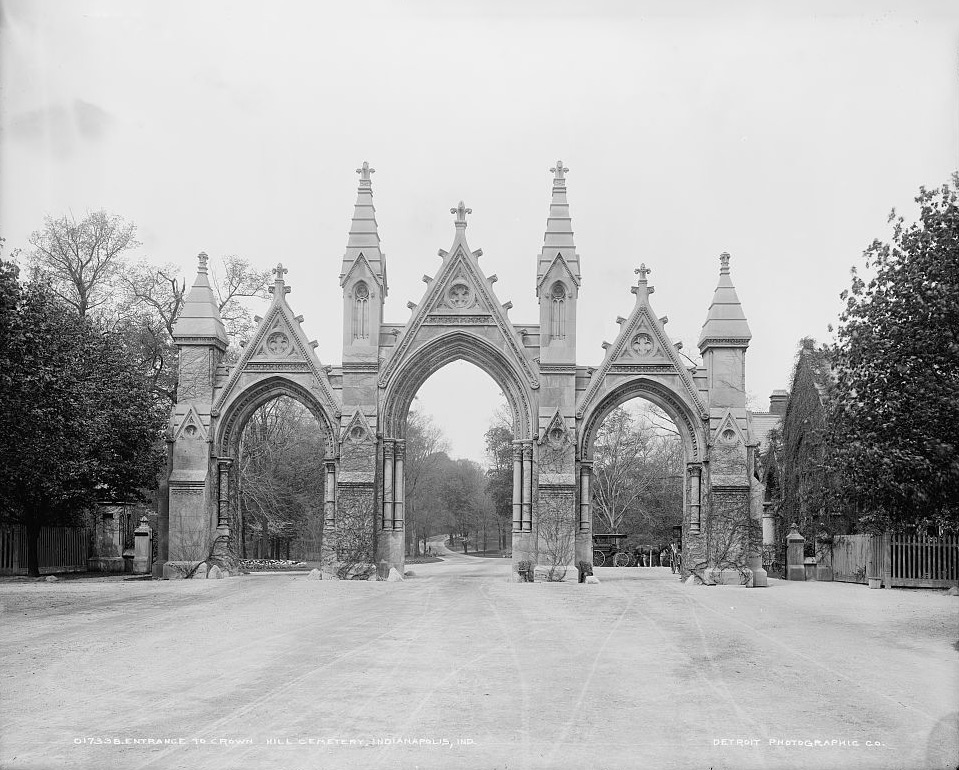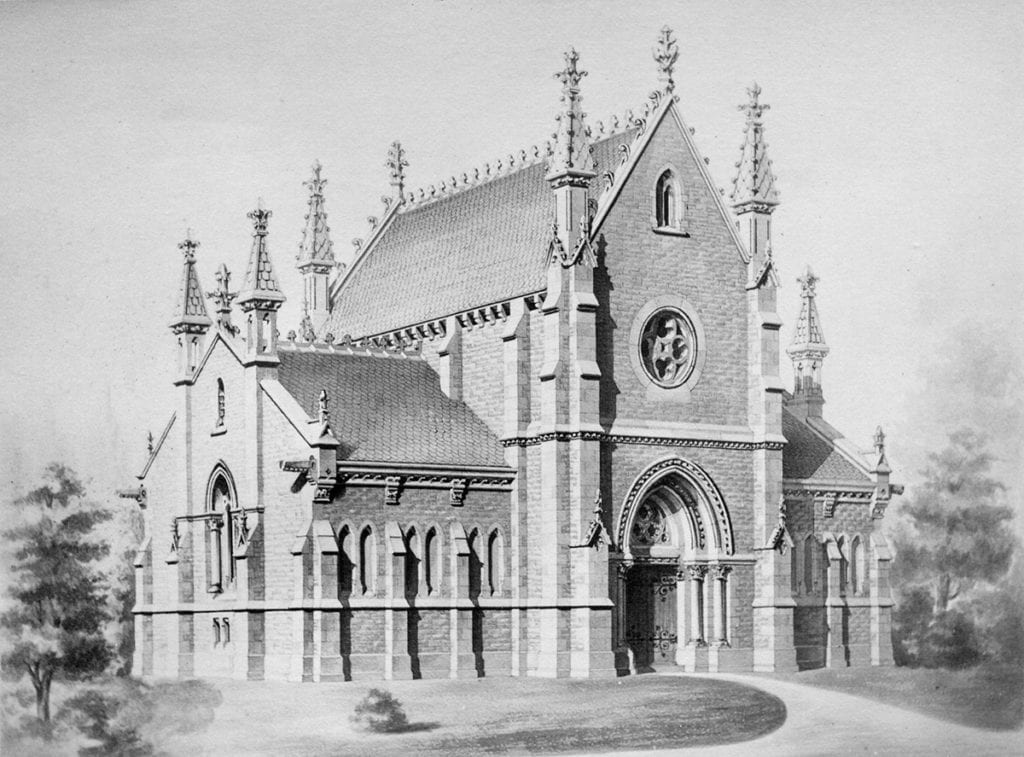The History Behind the Hoosier Landmark

Crown Hill Cemetery has a long, storied history. It essentially rose from the ashes of the Civil War. Before Crown Hill, Indianapolis had only the small Greenlawn Cemetery, which grew even more cramped as it filled with Union and captured Confederate soldiers.
Concern over Greenlawn’s limited acreage and lack of care spurred the creation of a 30-member Board of Corporators that bought the site of Crown Hill and established it as a nonprofit, nondenominational cemetery on September 25, 1863.
The land selected for the cemetery was considered some of the most beautiful in Marion County. From the 842-foot Crown Hill, so named because it was the “crowning hill among all hills in Marion County,” visitors encountered an extraordinary view of Indianapolis and the surrounding countryside.
The board contracted with John Chislett, a landscape architect from Pittsburgh, to design the cemetery shortly after it purchased 274 acres of land for $51,000. The following spring, his son Frederick Chislett, supervised the development of seven burial sections and remained the cemetery’s first supervisor for the next 30 years, after which his own son, also named John, succeeded him.
Lucy Ann Seaton, the wife of Civil War Union Captain John Seaton, became the first interment on June 2, 1864, one day following the cemetery’s dedication. Two years later, federal authorities requested a portion of Crown Hill Cemetery to be set aside for Civil War internments. This portion, the Crown Hill National Cemetery, was created on August 27, 1866 when the government paid $5,000 for a 1.4-acre section within Crown Hill. It is the first of three National Cemeteries within Crown Hill.
In October 1866, the federal government hired local undertaker William Weaver to supervise the transfer of Union soldiers from Greenlawn Cemetery to Crown Hill. Weaver’s men relocated the remains of 712 soldiers. Among those buried are 217 United States Colored Troop soldiers.
On May 30, 1868, the first Decoration (Memorial) Day observance at Crown Hill National Cemetery was held, in the same location where it’s been held annually every year since, making it the longest consecutively held Memorial Day ceremony in Indiana.

Deep inside the cemetery grounds, Diedrich Bohlen designed a stone Gothic Revival chapel in 1875. The chapel is one of few buildings left in Indianapolis designed by Bohlen, who is widely considered the first trained architect to live in the city.
In 1885, the Gothic Gate and Waiting Station designed by Adolph Scherrer was completed just in time for the funeral procession of Vice President Thomas A. Hendricks, one of three U.S. Vice Presidents buried at Crown Hill.
Other early watershed events for the cemetery include: the burial of Hoosier poet James Whitcomb Riley, the first person buried on “the Crown”; the construction of the 38th Street bridge and underpass; the burial of infamous bank robber John Dillinger; and the cemetery’s inclusion in the National Register of Historic Places. Among its many other credentials is the fact that it is the third largest non-government cemetery in the U.S.
Although Crown Hill Cemetery was born out of a dark chapter in American history, it blossomed into a vibrant historical space and cultural landmark that unites people from all walks of life.

